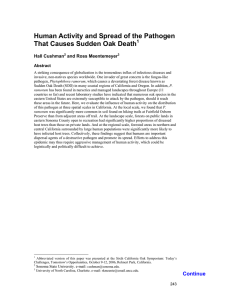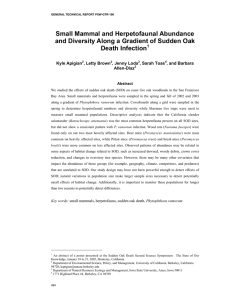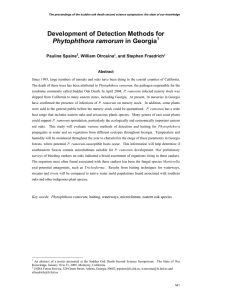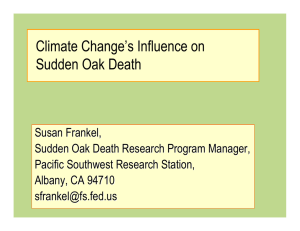Progress Toward the Development of a Model to Phytophthora ramorum
advertisement
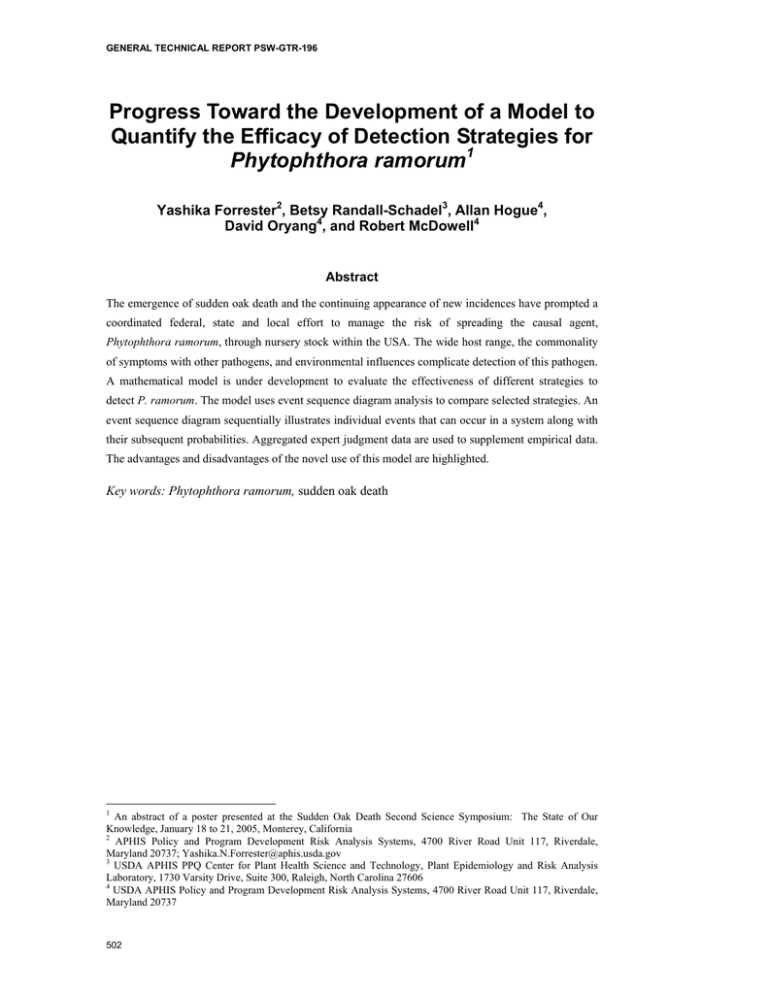
GENERAL TECHNICAL REPORT PSW-GTR-196 Progress Toward the Development of a Model to Quantify the Efficacy of Detection Strategies for Phytophthora ramorum1 Yashika Forrester2, Betsy Randall-Schadel3, Allan Hogue4, David Oryang4, and Robert McDowell4 Abstract The emergence of sudden oak death and the continuing appearance of new incidences have prompted a coordinated federal, state and local effort to manage the risk of spreading the causal agent, Phytophthora ramorum, through nursery stock within the USA. The wide host range, the commonality of symptoms with other pathogens, and environmental influences complicate detection of this pathogen. A mathematical model is under development to evaluate the effectiveness of different strategies to detect P. ramorum. The model uses event sequence diagram analysis to compare selected strategies. An event sequence diagram sequentially illustrates individual events that can occur in a system along with their subsequent probabilities. Aggregated expert judgment data are used to supplement empirical data. The advantages and disadvantages of the novel use of this model are highlighted. Key words: Phytophthora ramorum, sudden oak death 1 An abstract of a poster presented at the Sudden Oak Death Second Science Symposium: The State of Our Knowledge, January 18 to 21, 2005, Monterey, California 2 APHIS Policy and Program Development Risk Analysis Systems, 4700 River Road Unit 117, Riverdale, Maryland 20737; Yashika.N.Forrester@aphis.usda.gov 3 USDA APHIS PPQ Center for Plant Health Science and Technology, Plant Epidemiology and Risk Analysis Laboratory, 1730 Varsity Drive, Suite 300, Raleigh, North Carolina 27606 4 USDA APHIS Policy and Program Development Risk Analysis Systems, 4700 River Road Unit 117, Riverdale, Maryland 20737 502





